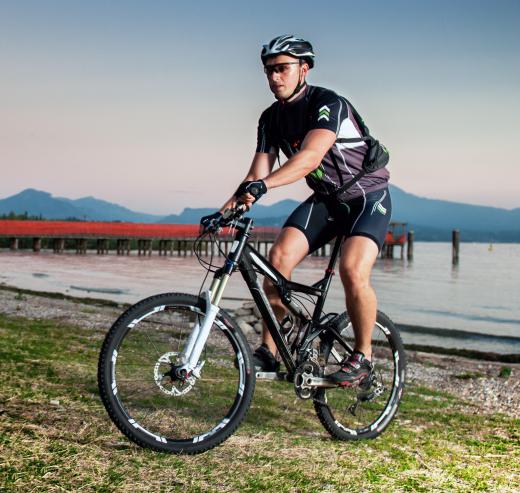Although many frustrated but undaunted five-year-old children may disagree, it is remarkably easy for most people to balance on a bicycle. Professional stunt riders can literally perform tricks on every part of a modified bicycle without touching the ground or even pedaling. Once a bicycle and rider take off from a stationary position, it seems like the bike becomes surprisingly stable in a short amount of time.
So why isn't it harder to balance on a bicycle than it apparently should be? The answer lies in the nature of balance and a few laws of physics. The most difficult part of learning to ride a bicycle for many people is creating enough momentum through pedaling in order to allow the bike to stabilize itself. Once a rider learns how to mount a bicycle and distribute his or her weight, the rest is up to the natural physics of the wheels, seat, pedals, brakes and handlebars.

A bicycle contains two wheels in a straight alignment. At first, this would appear to make it much harder to balance, but physics actually make it easier. When a structure like a revolving wheel starts spinning in one direction around a central axis, it wants to continue moving in that direction. At a certain speed, centrifugal force takes over and makes it extremely difficult to push or pull that wheel in another direction. In the case of a spinning bicycle wheel, the resistance created by centrifugal force is much stronger than gravity's pull towards the ground. As long as the tires are spinning and facing the same direction, it is much easier to balance on a bicycle than use force to make it fall.

Another reason it's easy to maintain proper balance on a bicycle is the position of the seat and pedals in relation to the wheels. A bicycle's center of gravity is very close to the seat and in a line above the pedals. When a rider mounts a bicycle and distributes his or her weight across the seat, frame and handlebars, he or she is positioned right at the center of gravity. This is the same principle of balance which allows tightrope walkers to move across a thin wire with a weighted pole. When a rider becomes perfectly balanced over the center of gravity, he or she only needs to make small adjustments in order to steer into a turn or change direction.

If a bicycle's tires were offset instead of perfectly aligned, or the seat were located far ahead or behind the center of gravity, it would indeed be difficult to balance on a bicycle. A bicycle becomes stable only when it takes advantage of the natural laws of physics and the principles of balance. A unicycle is notably less stable than a bicycle, but the rider still benefits from sitting directly over the center of gravity and creating centrifugal force through pedaling.
